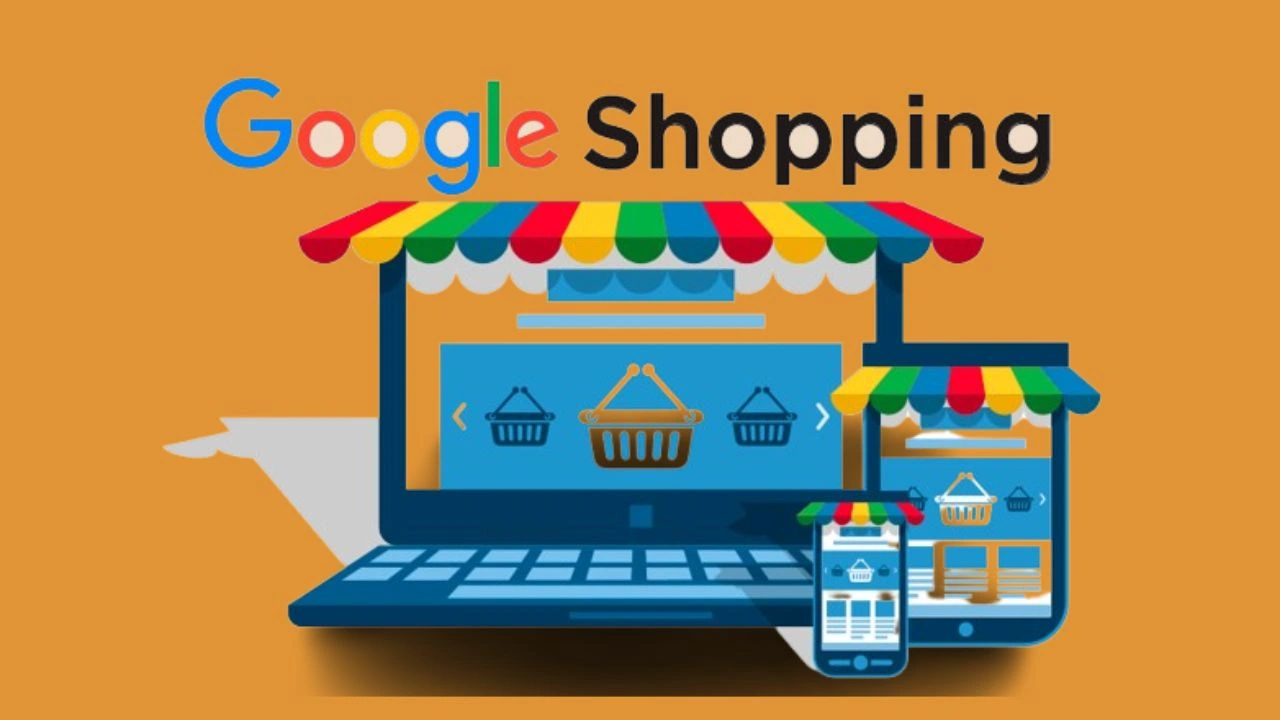How would you rank first in Google Shopping if you are the owner or marketer of an e-commerce business? Millions of products on the same website can very clearly spell out the fact that just listing your item is not sufficient to rank higher for visibility, clicks, and conversions to count.
This is a step-by-step guide that will take you through everything that you need to know about: how to rank in Google Shopping, from having an optimized product feed to employing advanced analytics, and integrating your efforts with the right digital services that will further supercharge your results.
Why Google Shopping is Important for eCommerce
Before discussing how to rank in Google Shopping, let us first deal with that very important subject.
Shop on Google has that visual appeal, and it is positioned at the very top of the SERP page of the search engine. These features are everything that comes with it: product images, price, seller info such as reviews. Very likely, if this is where your product belongs, you will be getting highly intentioned buyers.
Time to think about how to rank in Google Shopping, and you are already halfway to preventing ROI losses.
Optimize Your Product Titles and Descriptions
Your product titles and descriptions play a very critical role in how to rank in Google Shopping.
Best practices
Include the brand, product type, key features, and size/color/model in the title.
Product descriptions should be clear, rich with keywords, and match what users are searching for.
Avoid keyword stuffing-make the content naturally scannable
Working with a professional website redesign agency will overcome this by getting your product details designed that meet search-friendly design principles, so that geotagging and ranking increase.
Feed Optimization Is Everything
It’s your medium for Google Shopping. Quite simply, a badly optimized feed has to be the number one reason why products are just not ranking.
To improve how to rank in Google Shopping, your feed must
- Valid and current data
- Proper adoption of Google attributes (GTINs, MPNs, etc.)
- Ongoing submission to Google Merchant Center
- Detailed high-resolution pictures
Using a reputable Website maintenance services provider keeps your product feed and web data current enough to avoid disaffirmations and data mismatch problems.
Utilize Quality Exhibits Along with Dynamic Pricing
Industrial appearances drive Mr. Google Shopping; again, quality images prop up products. Clean backdrops, coupled with zoom resolution, would be a source of surfacing the world’s best product pictures. Also, pricing weighs heavily as part of the algorithm, as far as how to rank in Google Shopping is concerned: Google tends to put competitively priced items higher in the queue.
Try testing out different styles of images, trying out different angles, even lifestyle photos, and see which converts the best.
Configure Google Ads’ Smart Bidding
If you’re serious about ranking in Google Shopping, paid visibility is a must.
With machine learning, Google Ads Smart Shopping Campaigns automate your bidding and ad placements. Access to a broader audience is also made possible through Google’s properties like YouTube, Gmail, and Search.
Setting up Google Analytics and Conversion Tracking
The best way to understand and strategize for Google Shopping ranks is by tracking what works and what doesn’t. Google Analytics provides insight into which products are moving, which pages get conversions, and how users interact.
This data would help the team to refine product titles, bids, audience targeting, and feed strategy in general. Such Google Analytics development must be properly set up by a capable b2b web design agency while ensuring that all eCommerce goals are tracked.
6. Employ Enhanced eCommerce Tracking
Enhanced eCommerce tracking enables tracking every step of the customer journey, from product impressions to purchases. This is vital if you’re asking how to rank in Google Shopping, and the insight given would include:
- Cart abandonment rates
- Checkout behaviors
- Product performance
A travel website development company with eCommerce experience can customize these tracking features for niche businesses with reservation or catalog systems.
Keep the Merchant Center Account Clean of Errors
Errors in Merchant Center can ruin all your ranking efforts. Review issues regularly, such as:
- Disapproved products
- Missing attributes
- Expired feed
- GTIN/MPN mismatches
Fast correction of these issues will shield your eligibility and further boost how to rank in Google Shopping. For automated solutions, go for Google tag management consulting services for improved tag implementation and data accuracy.
Keep the Focus on Reviews and Ratings
Social proof will increase your click-through and conversion rates. Google Shopping prominently displays product and seller ratings, which can ultimately sway ranking in results.
Get into the habit of soliciting reviews following product purchase via email or some incentive scheme. Great ratings foster trust, and trust enhances rankings.
Use LIA (Local Inventory Ads) for Brick-and-Mortar Stores
Don’t underestimate using Local Inventory Ads if you own a physical store. These ads enable an understanding of the availability of products around them, thus promoting online and offline conversions.
This adds a locale to your Google Shopping solutions and makes the listing more relevant in the regional search another crucial dimension on how to rank in Google Shopping.
Audit Google Analytics Checklist
Finally, regularly performing a Google analytics audit checklist will ensure that your tracking systems are properly functioning. This directly helps avoid blind spots in data and ensures that all product metrics are reliable.
It’s not only about tracking, but also about using this data to improve targeting, rework product listings, and scale profitable campaigns. And all of this flows right into how to rank in Google Shopping.
Final Thoughts: Mastering Google Shopping Rank
The entire process of how to rank in Google Shopping comes down to strategy, analytics, and continuous optimization. A quick checklist would include the following:
- Include keywords in product titles and descriptions
- Maintain an accurate and complete product feed
- Upload good-quality images and maintain competitive pricing
- Run Smart Shopping Campaigns
- Set up Google Analytics advanced tracking
- Keep an eye on your Google Merchant Center for errors
- Work on getting better customer reviews and seller ratings
- Use local inventory ads if you have a store
- Perform audits for regular analytics
To give you an extra hand in the Google Shopping market, make sure to consider joining forces with professionals such as a Website Redesign Agency or Google analytics consulting services for that technical push.
And always remember: Google Shopping is more than just a listing platform. It is an evolving, data-oriented tool, and knowing how to rank in Google Shopping is the key to unlocking real growth for your e-commerce brand.
FAQs
How do you rank on Google Shopping?
To rank well in Google Shopping, you must optimize your product names and descriptions with the relevant keywords, keep a clean and updated product feed in Google Merchant Center, and add images that are of high quality. Using Smart Shopping campaigns and using Google’s data to analyze performance also backs up that. In short, if you want to know how to rank in Google Shopping, just know that it concerns feed accuracy, product relevance, competitive price, and user experience.
How do I rank my store on Google?
To rank your store on Google- either on the search site or on Shopping simply optimize your site from top to bottom with SEO best practices, set up your Google Merchant Center account, and run Google Shopping campaigns. Well, that’s how to rank in Google Shopping: have approved product feeds, optimized listings, and a solid repository of power analytics data within which to assess related performance and conversion. Also, include tools such as Google Tag Manager and enhanced eCommerce tracking.
How do I get my Google ranking?
You check your Google ranking with tools like Google Search Console, Google Analytics, or external SEO tracking. If you’re querying how to rank in Google Shopping, specifically, look at your performance using Google Merchant Center and Google Ads. Here, you can monitor things such as impressions, clicks, and conversions, as well as determine how well your products are performing in the Shopping listings. Correct any feed errors, utilize high-quality images, and bid competitively to enhance your ranking.
How to get stars on Google Shopping?
Getting stars (referred to as ratings) on Google Shopping comes from customer reviews, either product or seller ratings. To show stars, your store must collect and submit reviews from approved sources such as Google Customer Reviews or third-party aggregators. The site’s credibility will increase, and it will boost click-through rates. However, the most important part of how to rank in Google Shopping is boosting product reputation with reviews because Google favors listings that have significant social proof.






Leave a Reply